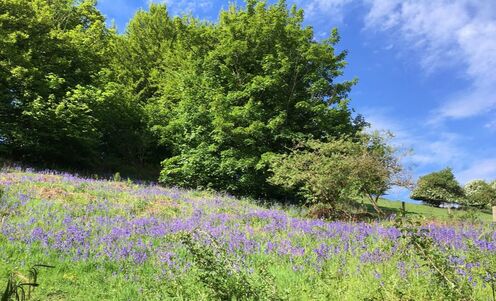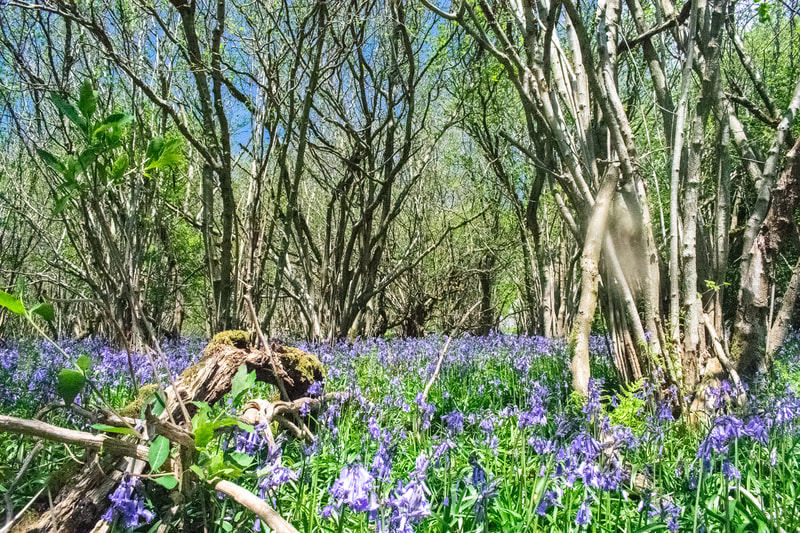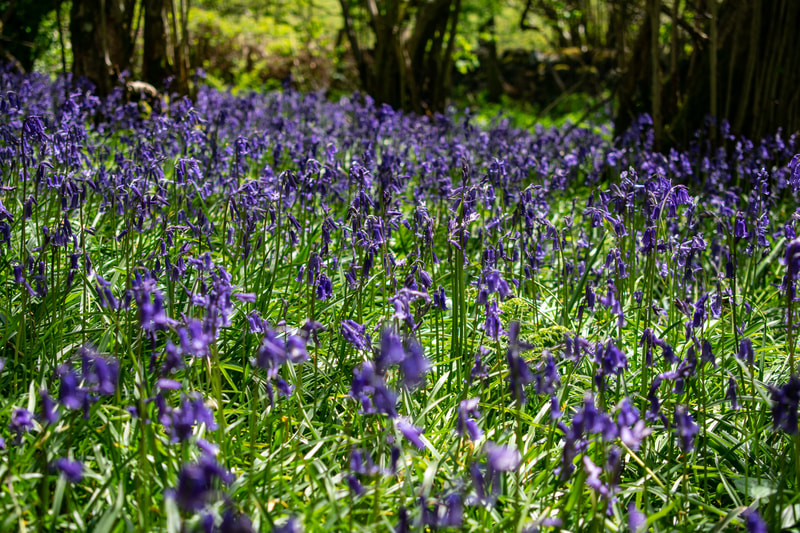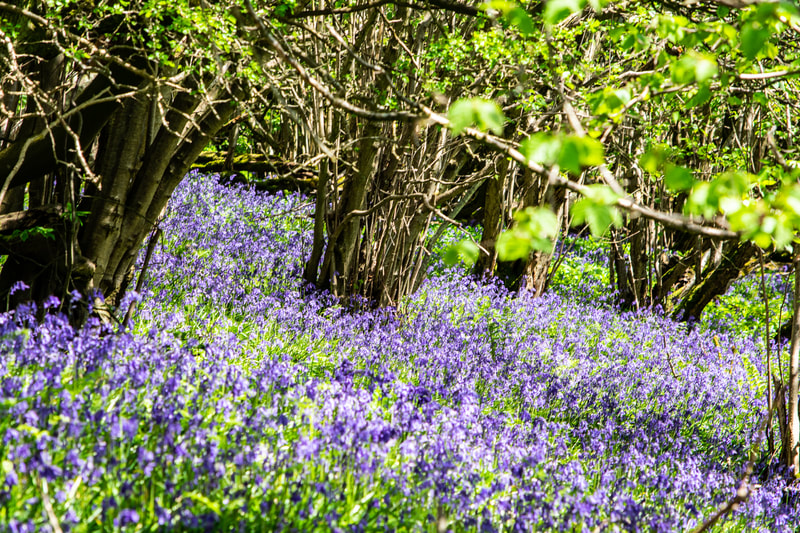
Perhaps it's because the other early Spring flowers tend to be white or yellow, and blue suddenly seems exotic. Bluebells are actually quite rare outside the UK - we have around half the world's bluebells.
I love some of the old English names for bluebells such as Witches' Thimbles, Cuckoo's Boots and Granfer Giggles.
The best places to see bluebells are in ancient woodlands. You can also find them among ferns in damp pastures, and even in the little grikes of limestone pavements. Bluebells like to avoid shade so grow and flower before the tree's canopy springs into full leaf. When you see them in hedgerows or among bracken, it can be a sign that these were spots once covered by woods. It's likely that bluebells were once even more populous in England as the Elizabethans used their bulbs to make starch for their ruffs, and the flower stalks were used as glue in bookbinding and for fastening feathers to arrows!
Three different species grow here - Italian, Spanish and English. If you plant some at home, try to make sure you plant the native English species (Hyacinthoides non-scripta). You can identify our native bluebells by looking for those with the longest stems and strongly scented flowers that hang delicately on one side. Bumblebees appreciate their early nectar.
Some beautiful bluebell woods to visit in the Yorkshire Dales:
- Oxenber Woods by Austwick
- Hackfall near Masham
- Grass Wood near Grassington
- Freeholders Wood in Lower Wensleydale
Please do be careful when you visit bluebell woods
Bluebells are really delicate, taking more than five years to become established from seed and they can take a long time to recover when their leaves are crushed (so don't walk among them or let dogs do so), sometimes even dying. It's against the law to pick or destroy bluebells. They die quickly once picked so please don't be tempted by their beautiful colour - a photo of them will last much longer and do less damage!
Images below by Jane Nair, Low Mill Guest House




 RSS Feed
RSS Feed
